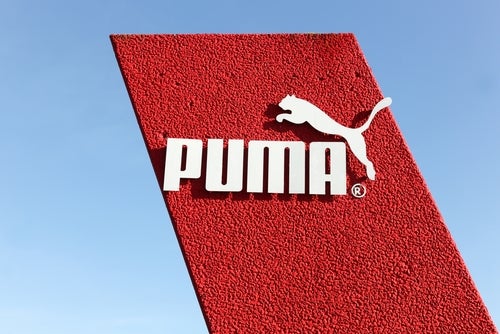
Sales at Puma surged on better performances in the EMEA and APAC regions with a particular highlight on Greater China’s remarkable recovery.
Puma reported slightly ahead of market expectations thanks to stronger revenue from Asia and Europe, whilst the US’s performance dwindled.
Sales in the Americas declined 4.4% due to ongoing softness in North America. Puma blamed the decline on ‘macroeconomic headwinds’ and its ‘dependency’ on off-price wholesale business.
Key figures from Puma Q2:
- Operating expenses (OPEX) increased by 6.6% to €843.4 million driven by the growth of the DTC channel, higher marketing expenses and sales-related costs, while other cost areas provided operating leverage.
- Operating EBIT decreased by 21.2% to €115.3 million mainly due to an unfavorable gross profit margin. This resulted in an EBIT margin of 5.4%.
- Net income decreased by 34.7% to €55.0 million (Q2 2022: € 84.3 million) and earnings per share amounted to € 0.37 (Q2 2022: € 0.56).
Arne Freundt, CEO of Puma commented: “On the back of our Q2 results, we are perfectly on track to achieve our full-year outlook in the transition year 2023. Puma continued to grow by double-digits, demonstrating continued strong brand momentum, despite the volatile environment. As the best partner for Wholesale, we worked together with our retailers through elevated inventory levels in the market and successfully normalised our own inventory levels as planned.
“Our strategic priorities Brand Elevation, winning in the US and China are key for Puma’s future growth trajectory. We are making good progress on all levels and with the announcement of new leaderships for global marketing and Mainland China, we have put the required organisational foundation in place.”
The company reasserted its full-year expectations, projecting currency-adjusted revenue growth in the high single digits and an operating profit ranging from €590m to €670m euros. Additionally, the company hinted at a potential revision to its guidance if favourable developments occur during the third quarter.
Alice Price, apparel analyst at GlobalData offers her view:
“Puma has reported another impressive set of results, with sales for H1 FY2023 rising €394.2m to €4.3bn. Performance in Q2 slowed significantly on Q1, with reported growth of 5.9% versus 14.4%, though in currency adjusted terms, growth was 11.1%, which was higher than the company’s expectations of low to mid single-digits. Sales for the half remained largely driven by its footwear proposition, which grew 19.9%, with strong demand for its football, baseball, and running categories, alongside lifestyle, as consumers also turn to Puma for its streetwear credentials. Apparel and accessories performance was much slower, up just 0.5% and then flat respectively, as consumers are more willing to cut back on volumes of these items amid inflationary pressures, and athleisure demand has softened on the back of the pandemic. Puma’s direct-to-customer push continued to work, with its stores and e-commerce platforms witnessing currency adjusted growth of 24.6% and 25.6% respectively, reinforcing the strength of its multichannel proposition. In contrast, wholesale was up just 9.6%.
“APAC (including Greater China) performed the strongest in H1, achieving currency adjusted growth of 26.0%. This comes after a period of stagnant sales in the region in FY2022, attributed to lockdown restrictions, and suggests that post-pandemic consumer appetite remains strong. EMEA witnessed similar growth with sales up 25.2%, proving that Puma’s appealing product offering remained resilient despite the region’s macroeconomic challenges. With sales down 2.7%, Puma will likely be unsettled by its performance in the Americas, with EMEA now overtaking it as Puma’s biggest region. While Latin America remained strong, North America consumers slowed down their spending amid inflationary pressures, and the brand’s reliance on off-price wholesalers also impacted growth.
“Puma stands by its full-year guidance of currency adjusted growth in the high single-digits, and to maintain its brand momentum, it is continuing to rely on athlete partnerships, which remain a key source of its success. In May 2023, the sportswear heavyweight announced the expansion of its partnership with Formula 1, with a multi-year deal, enabling it to further capitalise on the growing popularity of the sport. Elsewhere, Puma announced partnerships with notable athletes across athletics, football and tennis, such as rising sprinting star Julien Alfred and high profile footballer Xavi Simons. It’s choice of partnerships across a range of different sports help to generate broad appeal for the brand. Puma also continues to establish itself as a streetwear player, with its collaboration in June 2023 with up-and-coming fashion brand Players, to release a Y2K inspired trainer. The launch of this on-trend shoe, will enable it to compete with the likes of New Balance, with styles such as the New Balance 530 proving extremely popular among consumers for its early noughties’ aesthetic.”


